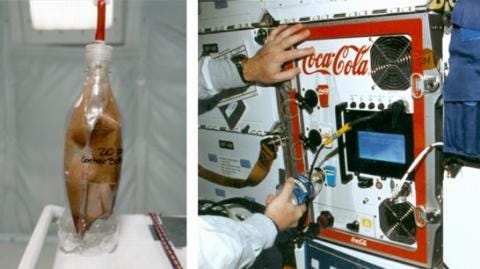Space Soda Wars: The Battle Between Coke and Pepsi in Orbit
Written on
Chapter 1: The Initiation of the Space Soda Wars
You may be familiar with Star Wars, but have you ever heard of the Space Soda Wars?

During the era when President Reagan was promoting his Star Wars strategic defense initiative, another fierce competition was taking place—this time in the realm of space beverages. Two colossal brands, Pepsi and Coca-Cola, aimed to claim the title of the preferred drink among astronauts.
Space missions offer astronauts a limited array of food and drink options, forcing them to forgo many of the comforts of home, including their favorite carbonated drinks. This created a unique marketing opportunity for soda companies eager to become the go-to refreshment for space travelers.
Section 1.1: Coca-Cola's Innovative Approach
In 1984, Coca-Cola's researchers devised a plan to provide astronauts with carbonated drinks during their missions, not only to enhance their beverage choices but also to create an exceptional advertising opportunity. They engineered a can designed specifically for the weightlessness of space, ensuring that the soda remained fizzy without spilling. NASA agreed to allow astronauts to test this innovative Coke dispenser during a shuttle flight.
Subsection 1.1.1: Pepsi's Response
Upon learning of Coca-Cola's project, Pepsi sought to join the competition and developed its own specialized container.

Credit: airandspace.si.edu NASA contributed this additional Pepsi can tailored for Space Shuttle missions in the 1980s, which was tested during STS-51F. The STS-51-F mission in 1985 featured both Coca-Cola and Pepsi products, allowing crew members to evaluate the dispensers and conduct a taste test in orbit. However, NASA ultimately decided against including either beverage in the Space Shuttle's food inventory due to mixed reviews from the astronauts.
Section 1.2: The Challenges of Soda in Space
Next time someone asks if it's possible to open a soda or beer can in space, you can provide an informed response.
Soda consumption in space presents unique challenges. While the design of the soda can addressed dispensing issues, the behavior of carbonated beverages differs significantly in microgravity. In space, gas bubbles tend to remain dissolved in the liquid instead of escaping through the can's opening. Consequently, astronauts ingest more carbon dioxide than they would on Earth.
This increase in gas leads to more frequent burping, which can be uncomfortable. On Earth, gases and liquids separate naturally in the digestive system, with lighter gases rising above denser liquids. In the microgravity environment of space, this separation does not occur, resulting in a phenomenon known as a “wet burp,” where liquid is expelled along with gas.

Credit: airandspace.si.edu NASA contributed this additional Pepsi can tailored for Space Shuttle missions in the 1980s, which was tested during STS-51F.
Chapter 2: The Future of Carbonated Drinks in Space
According to Vickie Kloeris, Subsystem Manager for Shuttle and ISS food systems at Johnson Space Center and program manager for NASA's Food Technology Commercial Space Center, carbonated beverages currently do not make it to space. "The carbonation in soda does not separate in microgravity. While some experiments have been conducted with special dispensers for soda, the technology is still in development."